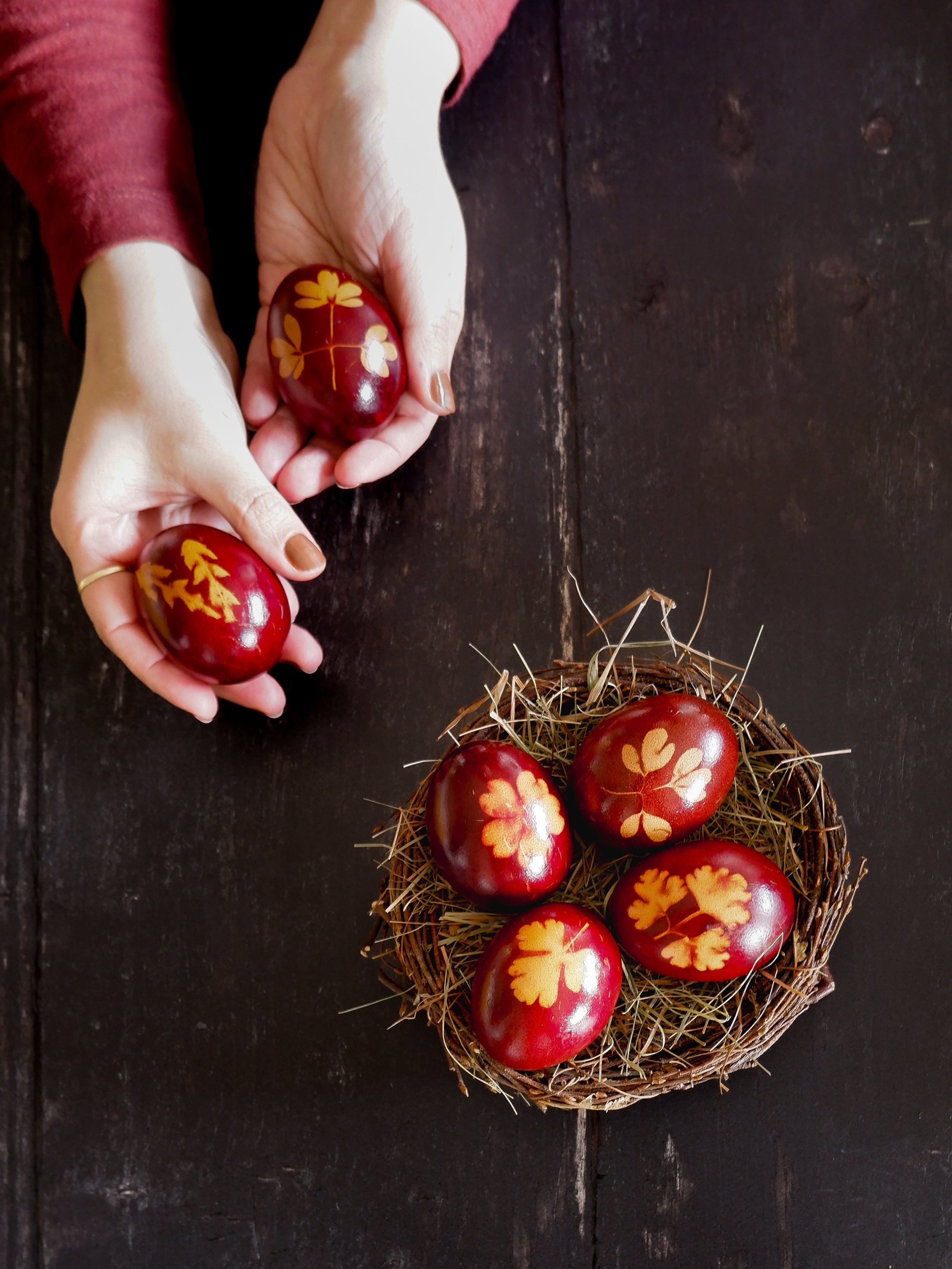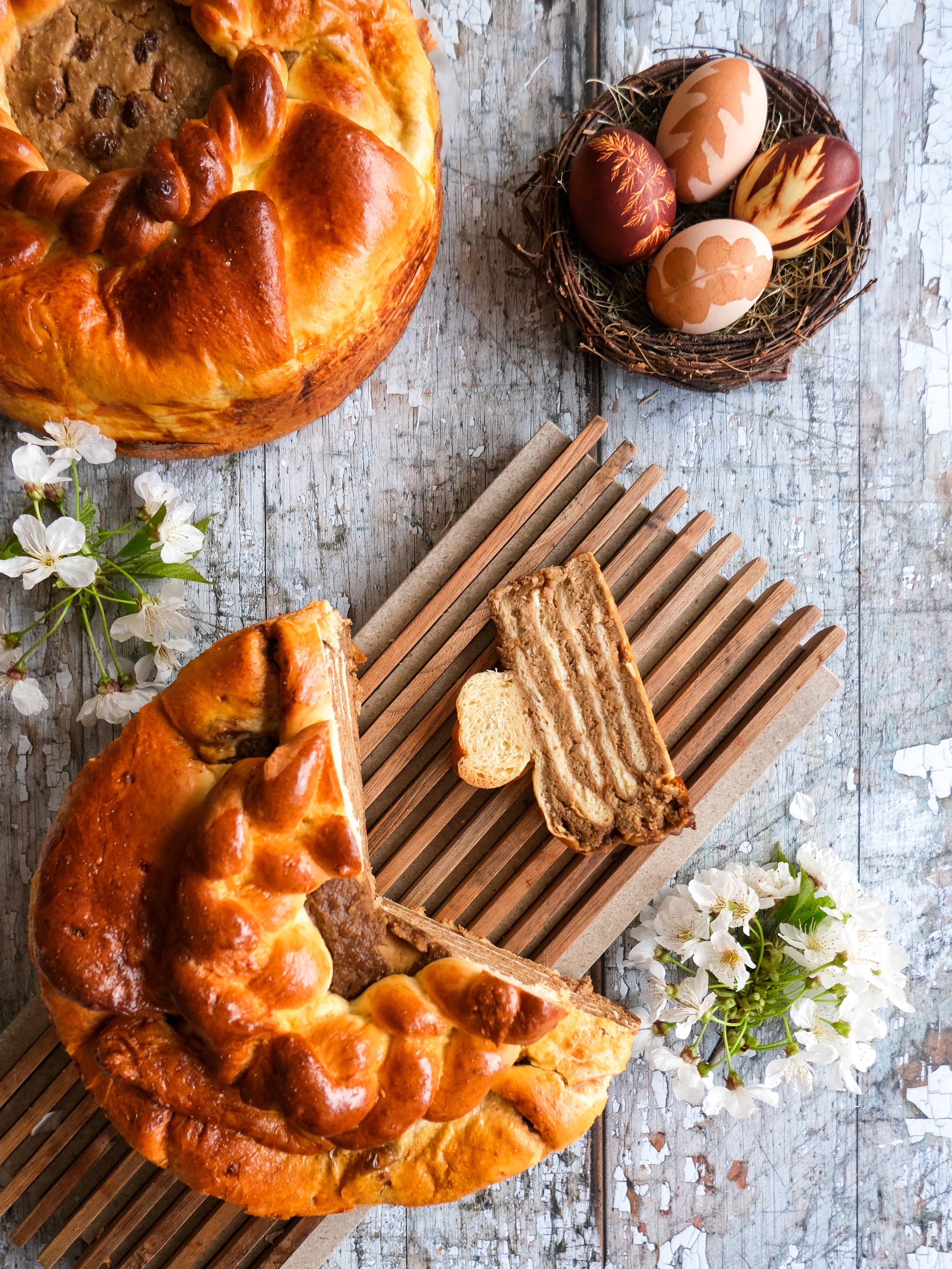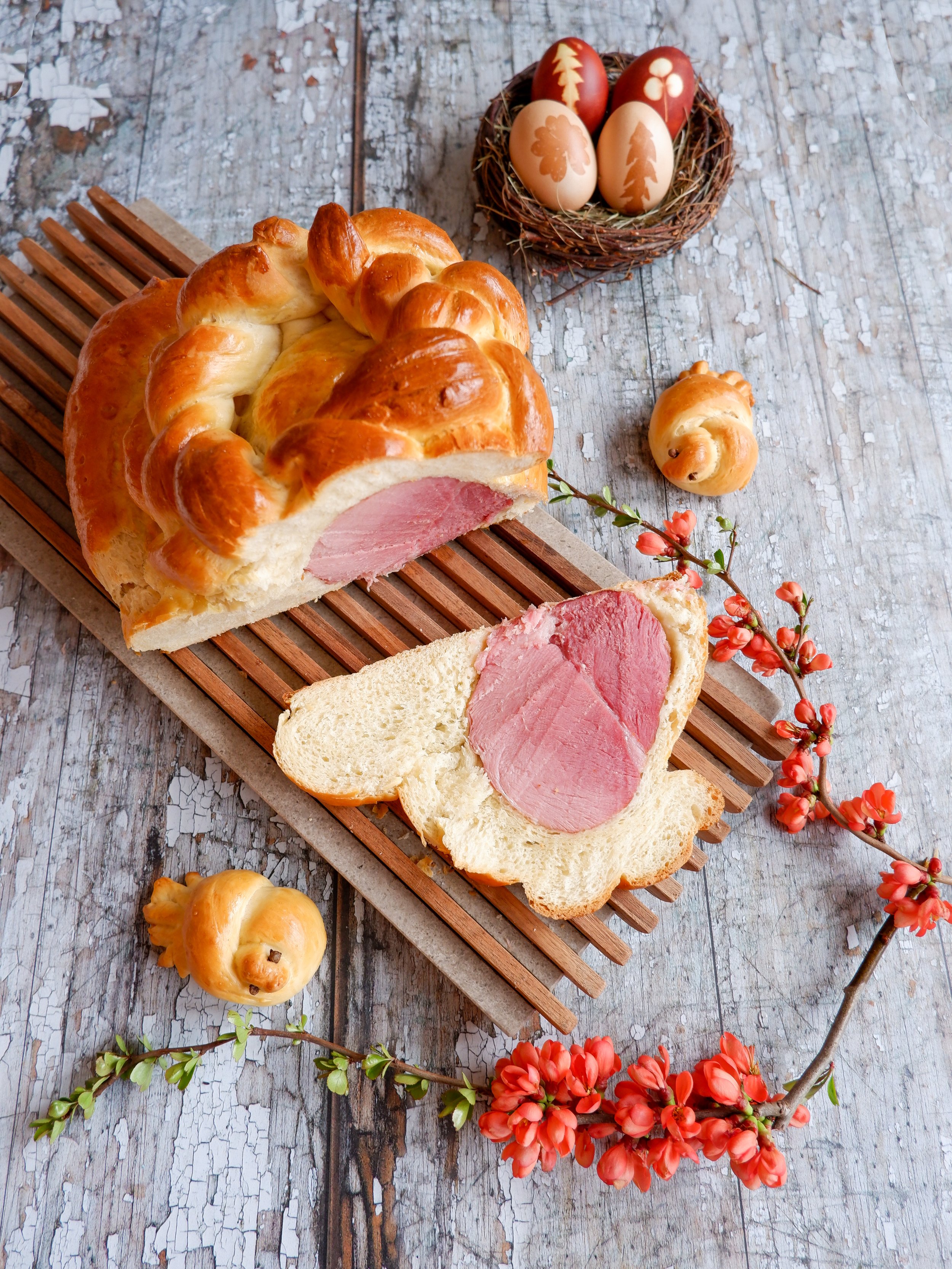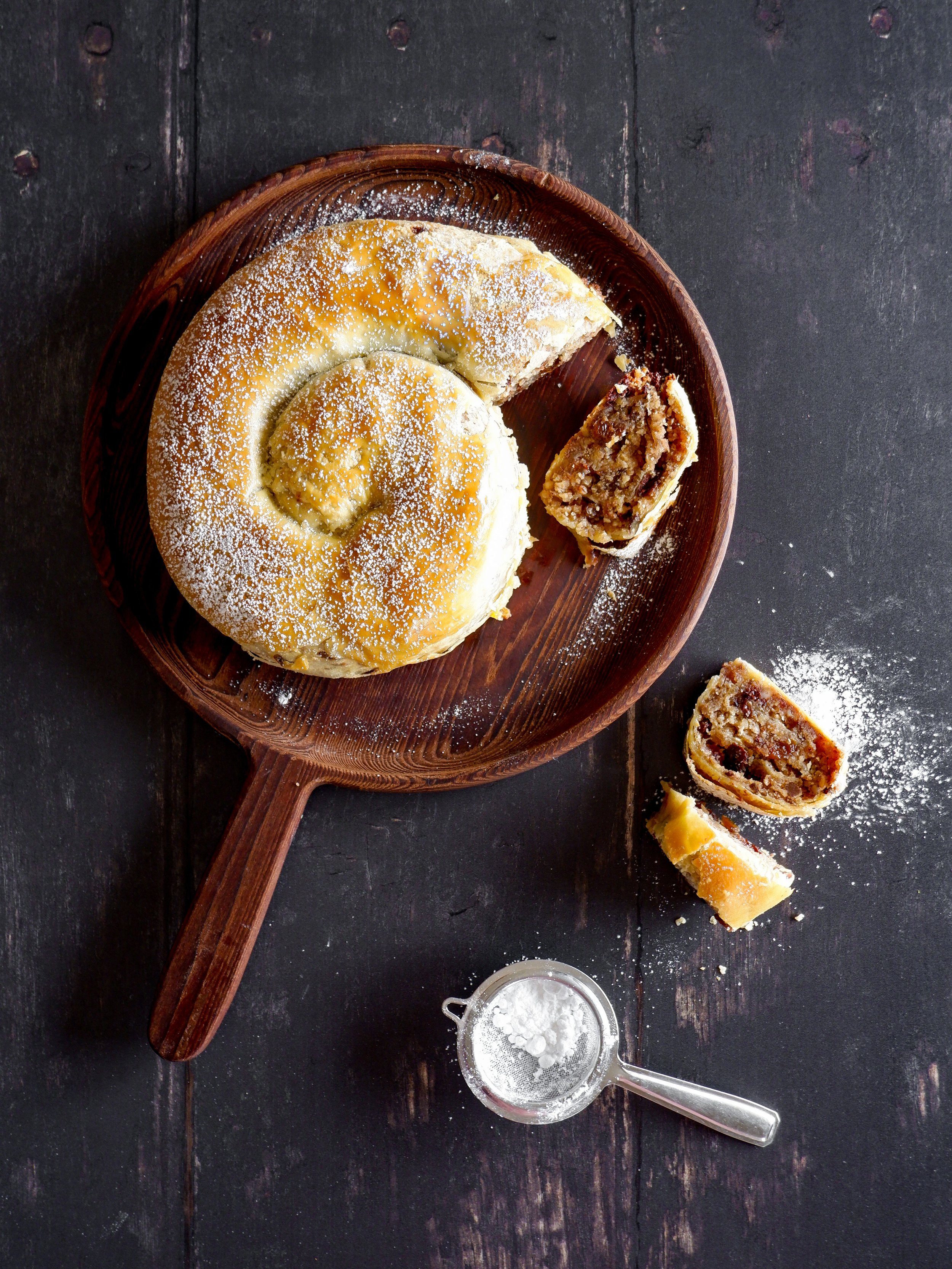Slovenian Easter
Slovenian Easter basket with ham, eggs, potica and horseradish.
Besides Christmas, Easter is the most important Christian holiday. It marks the end of the Lenten period of fasting, which begins on Ash Wednesday, and it celebrates Jesus' resurrection. As such, it is a holiday of joy and hope.
The Easter festivities in Slovenia kick off with Palm Sunday, the last Sunday before Easter, and the prelude to Holy Week, when Christians remember the last days of Jesus' earthly life. On this day Christians all over the world bless twigs or olive branches. This tradition has been widespread throughout Europe since the 9th century. It commemorates the arrival of Jesus Christ in Jerusalem, before whom people laid olive branches.
In Slovenia, special bundles called butarice are prepared at home or bought for the occasion and then brought to church for a blessing. Typically they are made with branches of different shrubs, such as hazel, catkin or elderflower. Other greenery and plants are often bound into these bundles, for example, braches of an evergreen shrub shaped into a wreath (žimberc or žingrec), which represents Christ’s crown of thorns, hazelwort, which represents the source of life, boxwood, which offers protection against storms, and juniper, which symbolizes suffering. Ivy is also sometimes used. Into this bundle spring flowers (daffodils), fruit tree branches or apples can be bound with colorful ribbons.
Certain rules apply when preparing butarica. The size of the bundle is supposed to reflect the age of the owner, so children had small bundles and bigger boys added long branches to the bundles to extend their length.
Maksim Gaspari: Cvetna Nedelja (Palm Sunday). This postcard depicts children taking butarice to church.
The old Palm Sunday butarice are either burned at home or taken to church, placed in a basket, and then burned during a ceremony on Easter Saturday.
Palm Sunday is followed by Holy Week, during which housewives prepare Easter dishes. Good Friday is also called the day of mourning, and there is no mass in the church on this day. In Slovenia, Good Friday is considered the strictest fasting day.
On Saturday morning, there is a blessing of fire and water to remind the believers of the fact that God spoke to Moses from a burning bush. After the blessing, the housewives began to cook, bake, and color the eggs or pirhi. Traditional egg dyes include teran wine, red onion skins, spinach leaves, nettle, dandelion, dog-rose syrup, marigold, elderberry flowers, and other natural substances.
Maksim Gaspari: Blagoslov oz. žegnanje velikonočnih jedi na prostem. (Blessing of Easter Baskets)
The first description of the Easter blessing of food in Slovenia is due to Janez Vajdkar Valvasor and it dates back to the 17th century. Housewives would take cooked eggs, ritual bread made of white flour, salted beef and smoked ham to the church to be blessed. The bread could weigh up to 17 kg. Also not to be missed in an Easter food basket were potica and lamb (jagenček), which was enjoyed even by the poorest on that day. Interestingly, the tradition of the Easter blessing has not changed much since the days of Valvasor. Even though exactly what gets into the basket may vary from region to region, it always contains smoked ham, radish, and Easter eggs. In certain parts potica is replaced by ritual bread or other types of cakes. Each food item has a special meaning: Easter eggs or pirhi are colorful hard-boiled eggs that symbolize drops of Jesus’s blood, ham represents Jesus’ body. Horseradish resembles the nails which were used to crucify Christ on the cross. Because of its round shape with upright ribbed outer edge, potica symbolizes the crown of thorns. The Easter basket or jerbas was covered with a white embroidered cloth. Women used to compete about who had the prettiest cloth.
‘Žegen’, the food blessed on Saturday morning, could only be eaten on Sunday morning, it was also distributed among the animals. So the breakfast was solemn, full of gratitude and respect.
Slovenski ljudski običaji: Cvetna nedelja, velika noč in binkošti










